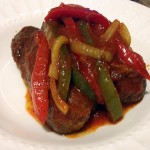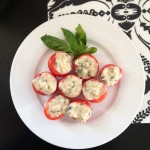
My first session with my new 8’4 Faktion shaped by Hawk, at Beach 90th (Rockaway Beach)
I’ve been long-term borrowing an 8’0 Torq. I’ve learned so much on it this past year. I really like how it rides. I have a sentimental connection with it, but I’ve been drifting towards a change…
I put the word out and my friend saw a board for sale on Instagram that looked like a fit for me. Strictly Surf (@strickly_surf) is three hours out in Amagansett, Long Island. We contacted the shop and a dude started texting us video and pictures. It’s 8’0, almost 22” wide. The volume wasn’t listed but my diligent friend and newly appointed board agent Kaori said it’s not full but enough volume. It has a square tail and adequate rocker. And it’s a Faktion, shaped by Hawk, so that’s rad.
Bob ‘Hawk’ Hawkins was a pioneer East Coast shaper making his first board in 1957 out of styrofoam, which he embedded a stringer into, then coated with epoxy resin. He was a Long Island native…just like me! He shaped out of his shop in Massapequa and Halesite, his hometown near Huntington. Sporadically throughout his career he shaped for other outlets, like Faktion. The surfing legend passed away only last year on December 5th, 2022 and since, his beautiful boards have become even more revered.
The question for Kaori and I at this point was, do we drive three hours to see the Faktion in person… It’s the only way to really know, aside from getting it in the water. I’m told if you find a board you feel will work, act fast. I gave myself a day to think about it.
In the meantime, I popped into Station (91-08 B Rockaway Beach Blvd.) to grab wax and you’re not going to believe this… there was an 8’4 Faktion… shaped by Hawk. Besides the color, length and some variation in volume, the major difference was the tail shape. The board at Station was a pin tail (better for barrels bruh). The board out east was a square tail – stability, better for beginners? There are endless variables when it comes to board shapes and performance. Then there’s your skill level and conditions to take into account. I was completely overwhelmed and had no idea what to do. My brain was barreled.
That day ended up going from good to terrible. I was in the worst mood for various reasons – I’ll spare you. I’m lying in bed at 5pm lamenting on a sunny Sunday afternoon. Then I was like, F**K IT. I went to Station, didn’t ask any more questions, bought the Faktion and walked out the door.
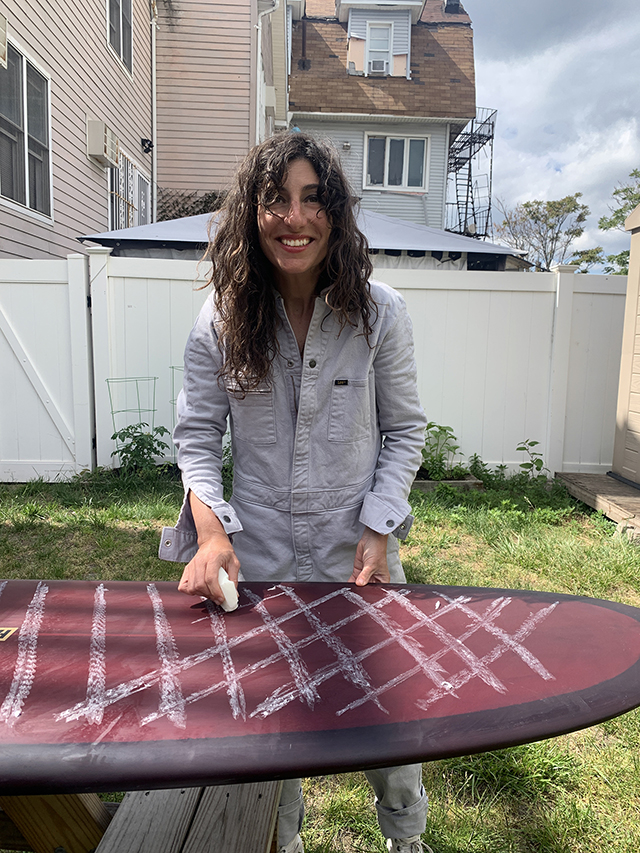
Both handcrafted on Long Island.
The next morning it was small – knee to waist high. I took out my new board and caught the most rides I ever have in one session. I was in the water for three hours. My board agent paddled out at some point and we were all smiles. She gave me helpful guidance. I told her the board felt really, really good. The only problem was a strange sensation of movement after I popped up. I felt like I was twirling around on the wave. Kaori said, “Paula, that’s what turning feels like!”
Follow my surfing journey on IG @theglorifiedtomato and visit theglorifiedtomato.com for all things Rockaway, on land and in the sea.
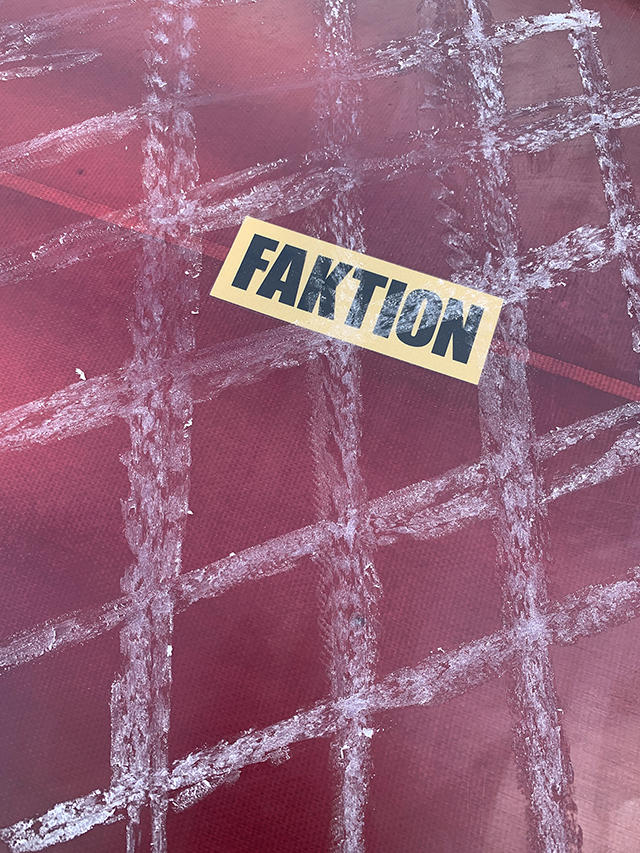 I learned how to properly wax a board.
I learned how to properly wax a board.
by Paula D.
on June 6, 2023 8:21 am in Surf
It was my first time in the water alone. I’d been surfing for a couple of months at this point. Kristi, my surf coach, felt I was ready. It was 1-2 feet, about eight seconds apart, and clean. I was at 91 on my borrowed Wavestorm, drifting out of the lineup with the offshore wind.
The early morning summer sun on my face was just right. I felt free and independent. But I wasn’t alone. There was a dolphin! A moment later there was another. Then, I see 10 dolphins and they’re 15 feet away. I brace the rails of my foamy. I’m exhilarated and a little scared. But then the unimaginable… I’m surrounded by a pod of 20-plus dolphins. They’re playing, and jumping all around me …I swear on the Blessed Mother.
I noticed other surfers were pointing in my direction. Out of the lineup, I’m the only one immersed in the creatures. One came so close I saw her teeth. I swear her eyes locked on mine. We think cute, pink dolphins on retro tee shirts or sparkly stuffed animal dolphins… I’ll tell you, seeing a dolphin up close is a little different. Her teeth were many, yellowed, and sharp. I saw the scars on her thick-skinned body that revealed her age, fearlessness, and her life of travels in the sea. She wasn’t pink, fluffy, or glittered; she was more beautiful than that.
The meeting was magic—a gift to me at a time when I needed the dolphins’ playful joy. I truly can’t put this experience into proper words.
With my sandy wetsuit still on, I grab my phone in the bedroom. I went to text Kristi, but there was already a message from her… “Are you ok??? You were surrounded.” Kristi, after she left me in the water, turned to check on me and saw my dolphin encounter. “Yes, I’m great!! It was unbelievable!!” Later we spoke. She said she was so nervous and felt responsible as my coach! While dolphins are friendly beings, they’re also about 9 feet long and have 500 pounds of solid muscle. If you accidentally get bumped… it would be a thing. I told her, after my initial shock, I felt strangely calm and safe.
This week is my one year surfing anniversary! I’m recalling the many special moments I’ve had…
Another awesome time was the impromptu 15-person swim. It was flat (I learned the perfect day for a paddle). Simon (@chardietsimon) was on the boardwalk. He invited a bunch of us to go along with his group of swimmers. “It’s good to have boards for safety,” he said. We had so many laughs. We helped swimmers take a little rest on our boards. What fun! My arms and shoulders were crazy sore. Days like that you can’t recreate.
I learned people talk about all sorts of things in the water besides surfing. Lots of food talk, ehem.. the new breakfast burrito at Washed Up (@washedup.nyc); lots of boy talk and dating; convos about tie-dye parties and Wild Yak shows; secrets shared; chats about cute spring suits on sale and sunblock debates. I learned it’s not rude to stop mid-conversation, turn and catch a wave. Waves come first.
This year I took lessons with @seasons_surf_NYC. Practicing the fundamentals from a pro helped tremendously.
In January, I traveled to Puerto Rico for my first surf trip—a Rockaway Surfer’s rite of passage. There I surfed my first reef break and banged up my knee!

People switch boards in the water for fun and I have Rebecca Parker (rockawayacupucture.com) to thank for letting me try hers. I caught my first hardtop ride on her 9-foot hot pink board and since then, I haven’t turned back!
Two weeks ago I dropped in on my friend and got into my first collision, but it’s okay! It was a small closeout day. We were far apart so I decided to take the same wave. Magara angled down the line (the only way to catch a closeout, I know that now). I was a deer in headlights! “Cover your head.” I remembered. We didn’t get hurt! Nigel is fixing my ding and Magara’s solid 9-foot-6 Paul Surf is unscathed. Big learning moment though—never let your guard down, especially on those chilly days.
I continue to meet rad people in the water and they’re all cheering me on. I’ve made some special connections with people that are now my dear friends. This is just year one. How will my life as a surfer grow? I’m excited to see where the next wave takes me…
Have you had the specialty eggplant slice at Gino’s Pizzeria in Howard Beach? My lord, it is good! The eggplant is thin and perfectly tender. It’s presented on a crispy grandma slice with fresh mozzarella, and basil, drizzled with olive oil.
Aubergine isn’t easy. So many things can go awry—bitterness; undercooked equals strange consistency; overcook and it’s a mush mess; oil soaked causes a stomach ache. Then there’s the tough skin, and choking hazard problem.
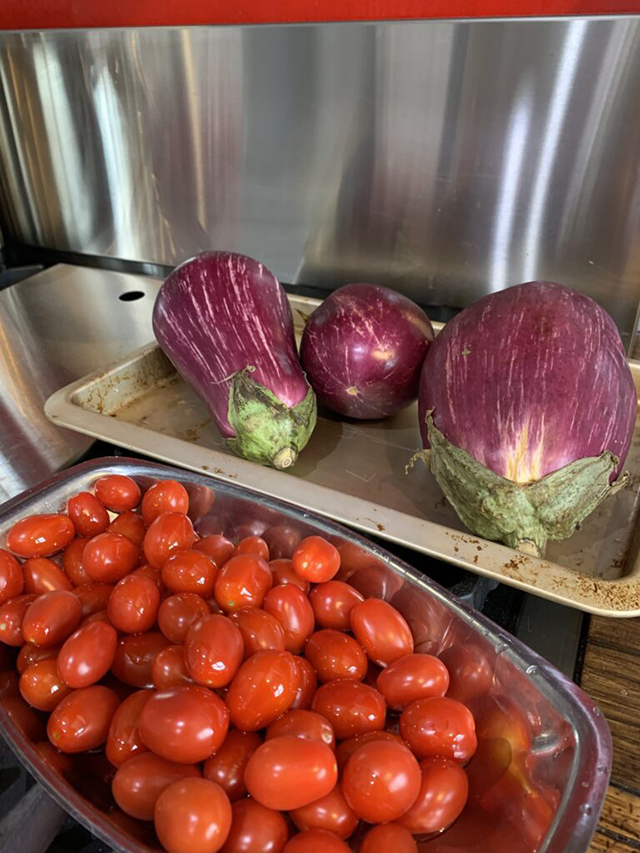
Gretel eggplant has a lovely sweet, and nutty taste.
This season in my vegetable garden, I planted white gretel eggplant! This variety is narrow and long. The skin is thinner than our common globe eggplant. This means it’s easier to prepare. Eat them young or fully mature. The younger the eggplant, the fewer the seeds. Gretel eggplant has a lovely sweet and nutty taste.
The delicious Gino’s slice got me thinking… I love eggplant so much (insert emoji here) but I only really prepare it one way, and that’s fried.
In preparation for my harvest, I want to experiment with other ways to cook aubergine. I found this exciting recipe on the Food Network—Eggplant Walnut Streusel. It calls for roasting the eggplant. The tarte tomatoes with warm walnuts and the creamy feta is a delicious combination. The dill and lemon give it a great complementary pop! Eggplant people will love this, if you’re texture sensitive, I’ll be honest, this may not be for you. The recipe takes a bit of time (1 1/2 hours) but it’s delicious, different, and worth it!
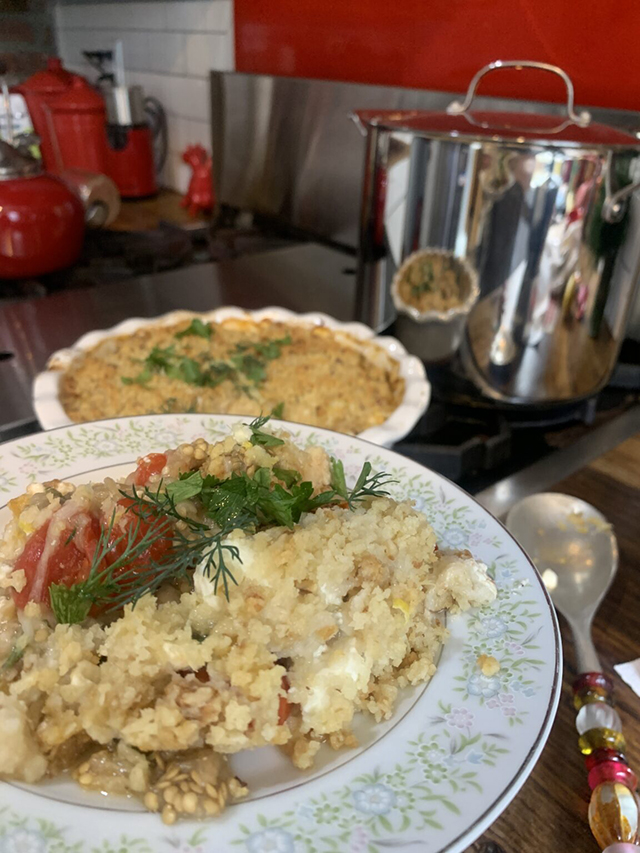
Eggplant Walnut Streusel
Ingredients:
2 to 3 large eggplants
Kosher salt and freshly ground black pepper
1/2 cup panko
1/2 cup chopped walnuts
1/4 cup all-purpose flour
6 tablespoons olive oil, plus extra for drizzling
2 cups grape tomatoes
3 clove garlic, finely grated
3 tbsp.chopped fresh dill
3 tbsp. chopped fresh parsley
1/2 cup crumbled fresh feta
Zest of 1 lemon
Directions:
- Preheat to 400 degrees F. Pierce the eggplants all over with a fork and place on a baking sheet. Drizzle/cover with olive oil. Roast on the top rack until completely soft when pierced—about one hour.
- Meanwhile, toss the grape tomatoes with olive oil and fresh pepper. Spread on a small baking sheet and roast in the same oven until the tomatoes are soft—about 20 minutes. Transfer to a large bowl.
- Mix together the panko, walnuts, flour and salt in a bowl. Drizzle in olive oil and mix until it clumps. Reserve.
- When the eggplants are cool, halve them and scoop the soft flesh into the bowl with the tomatoes. Discard the skins and stems. Using a fork, mash the eggplant into smaller bite-sized pieces. (It’s okay if the tomatoes get mashed in the process.) Add the garlic, dill and parsley and more olive oil. Check for seasoning, adjust if needed.
- Drizzle a little olive oil in the bottom of a 9×12 baking dish. Spread the eggplant mixture in the dish. Sprinkle feta, then top with the reserved panko-walnut mixture. Bake until the top is golden brown and the eggplant is hot, 35 minutes. Before serving, sprinkle the remaining dill, parsley and the lemon zest.
Follow me in the garden on IG: @theglorifiedtomato
by Paula D.
on May 18, 2023 9:19 am in Community
In my research last week on Astrology I had the thought … why are horoscopes published in newspapers? The news is factual (we hope), astrology is predictions and prophecy.
Here’s a brief history from Smithsonian Magazine.
“The first real newspaper horoscope column is widely credited to R.H. Naylor, a prominent British astrologer of the first half of the 20th century. Naylor was an assistant to high-society neo-shaman, Cheiro (born William Warne) who’d read the palms of Mark Twain, Grover Cleveland, and Winston Churchill and who was routinely tapped to do celebrity star charts. Cheiro, however, wasn’t available in August 1930 to do the horoscope for the recently born Princess Margaret, so Britain’s Sunday Express newspaper asked Naylor.
Three days after the Princess’s birth, Naylor’s published report predicted that her life would be “eventful.” He also noted that “events of tremendous importance to the Royal Family and the nation will come about near her seventh year,” a prediction more precise – her uncle, King Edward VIII, abdicated the throne to her father.
But though it wasn’t the first of its kind, Naylor’s article was a tipping point for the popular consumption of horoscopes. Following the interest the public showed in the Princess Margaret horoscope, the paper decided to run several more forecasts from Naylor.
The then-editor of the Sunday Express offered Naylor a weekly column, “What the Stars Foretell” and the first real newspaper horoscope column was born. The column offered advice to people whose birthdays fell that week, but within a few years, Naylor determined that he needed to come up with something that could apply to larger volumes of readers. By 1937, he’d hit upon the idea using “star signs,” also known as “sun signs,” the familiar zodiac signs that we see today.”
So the answer to why newspapers run horoscopes? They are wildly popular and gain readership. Today we find horoscopes not only in the newspaper but in magazines and tabloids and it’s become a $2 billion market through apps and social media accounts.
When you really think about it, it’s astonishing how Astrology, as an ancient academic discipline, devolved into generalized forecasts relating to money, life, and love – “Find out why a Sagittarius will be your soulmate!” These thin, page-filler predictions must be infuriating (or comical) to accredited astrologers of today.
Speaking of which, after publishing my column last week, Catherine Yeager Mcquaid reached out. She said she loves reading my column!
Locals know Catherine runs her own Integrative Therapeutic Massage practice located at The Castle Wellness Center. She’s highly recommended. Catherine is also an Astrologer. She earned her professional training at the Oraculos School of Astrology, certified in Magical Elections through STA. Mcquaid completed a two-year study at the Qabalistic Tarot Professional School and furthered her education with the National Council for Geocosmic Research as a certified level I and II Astrologer.
Catherine invited me to join the Astrology and Divination Club. The next meeting is on Monday, May 8, 5 p.m. at Ocean Bliss (Yacht Club, 533 Beach 126th St. Belle Harbor). This gathering focuses on retrogrades. If you’re curious or called to the stars, sign up here: oceanblissyoga.net. And reach out to Catherine directly if you’d like to learn about your Zodiac.
To schedule a reading, Catherine can be reached by email here.













